The Earth has always been bombarded with rocks from space. It’s true to say though that there were more rocks flying around the Solar System during earlier periods of its history. A team of researchers have been studying a meteorite impact from 3.26 billion years ago. They have calculated this rock was 200 times bigger than the one that wiped out the dinosaurs. The event would have triggered tsunamis mixing up the oceans and flushing debris from the land. The newly available organic material allowed organisms to thrive.
Continue reading “A Giant Meteorite Impact 3.26 Billion Years Ago Helped Push Life Forward”Devastating Clouds of Dust Helped End the Reign of the Dinosaurs
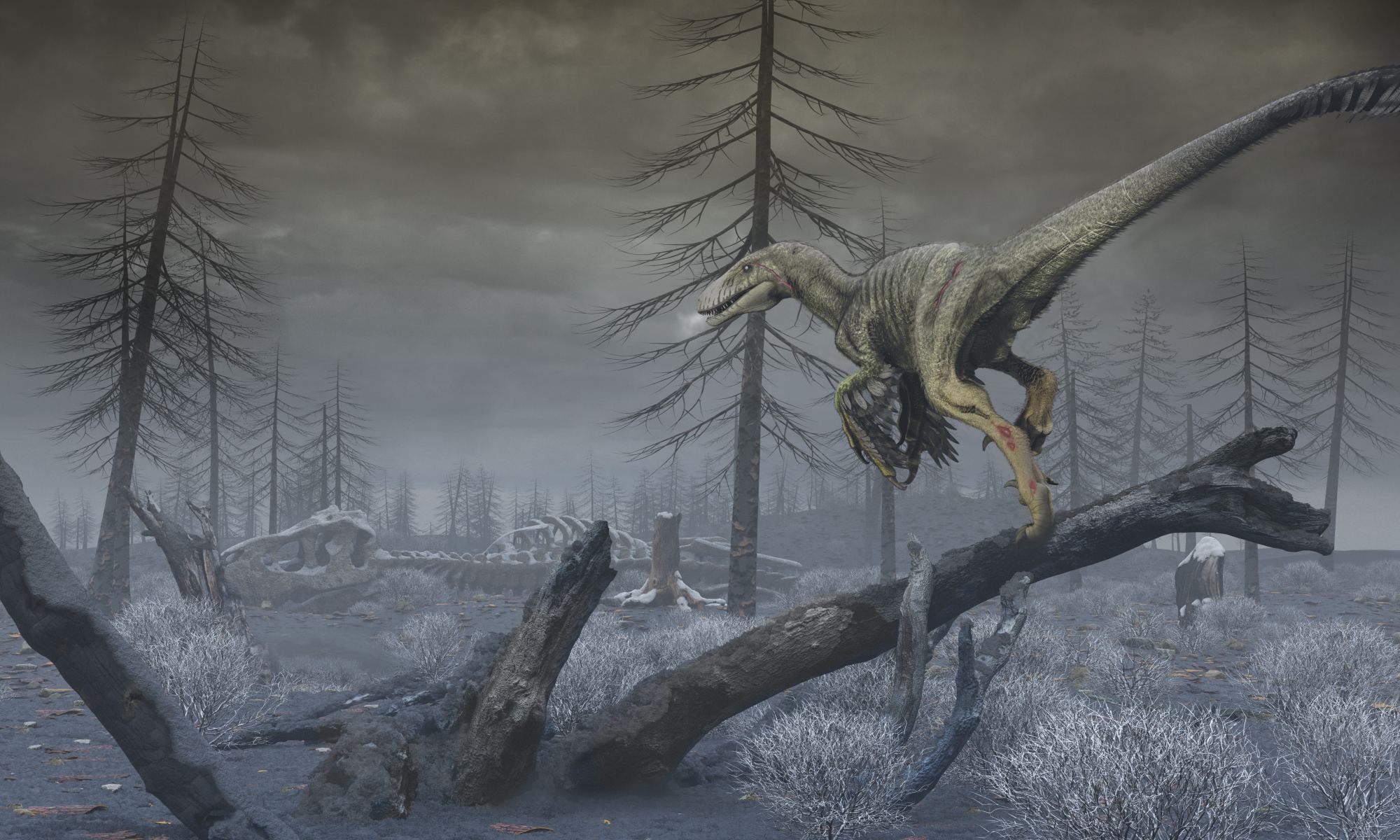
When a giant meteor crashed into Earth 66 million years ago, the impact pulverized cubic kilometers of rock and blasted the dust and debris into the Earth’s atmosphere. It was previously believed that sulfur from the impact and soot from the global fires that followed drove a global “impact winter” that killed off 75% of species on Earth, including the dinosaurs.
A new geology paper says that the die-off was additionally fueled by ultrafine dust created by the impact which filled the atmosphere and blocked sunlight for as long as 15 years. Plants were unable to photosynthesize and global temperatures were lowered by 15 degrees C (59 F).
Continue reading “Devastating Clouds of Dust Helped End the Reign of the Dinosaurs”Mammals Were Already Flourishing When The Axe Fell On The Dinosaurs
It’s an apocryphal image. The ignorant faces of the dinosaurs, roaring helplessly at their fate, and looking skyward as an asteroid plunged to Earth. And the sneaky, clever little mammals coming out of their hiding holes to take their rightful place. If you grew up reading about this version of things, you’re not alone.
The line of reasoning says that mammals were present during the dinosaur’s reign, but their potential to thrive was suppressed by the dinosaurs, which were supremely evolved to dominate conditions on Earth at the time. It took the extinction of the dinosaurs to allow mammals to flourish. But according to new studies, that might not have been the case. As it turns out, mammals may have been well on their way to displacing the dinos long before the Chicxulub meteor hastened the dinosaur’s demise.
One such study, from researchers at the Universities of Southampton and Chicago, focused on hundreds of fossilized mammal teeth. As you know if you’ve been paying attention to how you eat, different teeth have different purposes. Carnivores have sharp teeth designed to rip and shred flesh, while herbivores have duller teeth for grinding up vegetation. Omnivores, like us, have a bit of both. That’s a simplification, of course, but its generally true.
What this study showed is that mammals with varied diets began to appear 10 to 20 million years before the dinosaurs were extinguished. It focused on early therian mammals, which are the ones that gave rise to the modern marsupials (ones with pouches) and placentals (ones where a fetus is carried inside the uterus). The third class of mammal, monotremes, were egg-laying mammals like the platypus.
In recent years, more and more early mammal fossils have been discovered, and they show that mammals were well on their way to diversifying long before the dinosaurs disappeared. The mammal fossil record also shows that mammal diversity suffered from the meteor strike, but mammals recovered and diversified into a greater number of species in the new conditions.
Another study, by Manabu Sakamoto and Chris Venditti from the University of Reading, and by Michael Benton from the University of Briston, shows that the opposite is true for dinosaurs. For tens of millions of years before their extinction, dinosaur species were becoming extinct and new species were not taking their place. This made the dinosaurs more vulnerable to extinction, whereas the diversifying mammals were in a better position to thrive, regardless of dinosaur extinction.
The main threat posed by the asteroid strike was the climate change that followed it. With greater species diversity in place immediately preceding the strike, mammals had a greater probability to survive the changing climate than did their dinosaur counterparts.
Evolutionary biologist and co-author of the study, Dr. Chris Venditti, told BBC News, “The current widespread view is that dinosaurs were reigning strong right up to the impact that hit the Earth – and it’s the impact that drove their final extinction,” he said. “And while that’s certainly true, what we found was that they were on the decline long before that.”
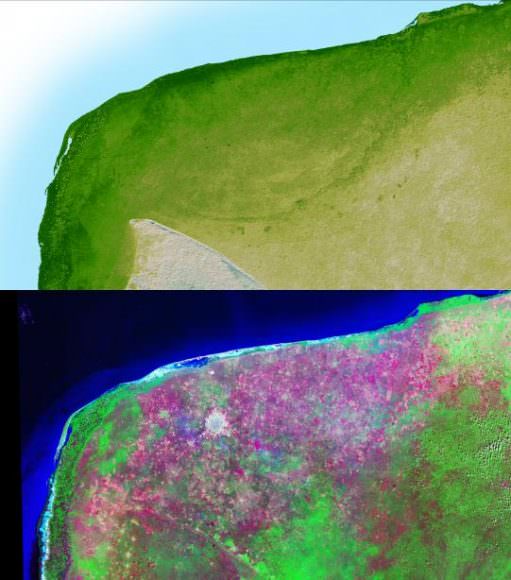
“If they were reigning strong perhaps they would have fared much better than they did,” said Venditti. Dinosaurs had been around for 160 million years and had faced pressures and had dips in their diversity before.
This begs the question, why were dinosaurs in decline?
It likely all revolves around the environmental conditions. At the dawn of the dinosaurs 230 million years ago, Earth was a warm, lush place. Not just near the equators, but all the way to the poles. And there was one single continent, called Pangaea. But it’s the nature of things to change, and change it did.
The climate cooled, the sea level changed, and the dinosaurs were facing new environmental pressures. And as the record shows, the dinosaurs were losing species faster than they could replace them. Chicxulub was more than they could recover from.
Study co-author Mike Benton also talked to the BBC about this study. He said, “World climates were getting cooler all the time. Dinosaurs rely on quite warm climates and mammals are better adapted to the cold.”
“So there might have been a switch over in any case without the asteroid impact.”
Looking back on the older narrative, that the asteroid strike wiped out the dinosaurs, and mammals took their place and became dominant, it looks a little simplistic. But it has a nice narrative hook, and there is the matter of the cataclysmic asteroid strike, which no doubt had a huge effect on life on Earth, any way you want to slice it.
It’s possible that had the asteroid not struck, or had struck a few million years earlier or later, Earth would be a much different place. Perhaps we would not be here, and maybe intelligent dinosaurs would be in our place.
We’ll never know, of course, but it’s a fun narrative.
Weekly Space Hangout – Mar. 11, 2016: Dr. Sarah M. Milkovich
Host: Fraser Cain (@fcain)
Guests: Dr. Sarah M. Milkovich, Planetary Geologist and current Science Systems Engineer at JPL working on Mars 2020 Rover. She has also worked on MRO (HiRISE), MSL, Cassini (UVIS), and Mars Phoenix Mission.
Guests:
Morgan Rehnberg (MorganRehnberg.com / @MorganRehnberg)
Dave Dickinson (www.astroguyz.com / @astroguyz)
Paul Sutter (pmsutter.com / @PaulMattSutter)
Alessondra Springmann (@sondy)
Their stories this week:
InSight lives.. But at what cost?
Blue Origin targeting 2018 debut of space tourism
Amazing Views of This Weeks Eclipse
Drilling into Chicxulub crater
We’ve had an abundance of news stories for the past few months, and not enough time to get to them all. So we’ve started a new system. Instead of adding all of the stories to the spreadsheet each week, we are now using a tool called Trello to submit and vote on stories we would like to see covered each week, and then Fraser will be selecting the stories from there. Here is the link to the Trello WSH page (http://bit.ly/WSHVote), which you can see without logging in. If you’d like to vote, just create a login and help us decide what to cover!
We record the Weekly Space Hangout every Friday at 12:00 pm Pacific / 3:00 pm Eastern. You can watch us live on Google+, Universe Today, or the Universe Today YouTube page.
You can also join in the discussion between episodes over at our Weekly Space Hangout Crew group in G+!
Dinosaur Killer Chicxulub Crater To Be Drilled For First Time
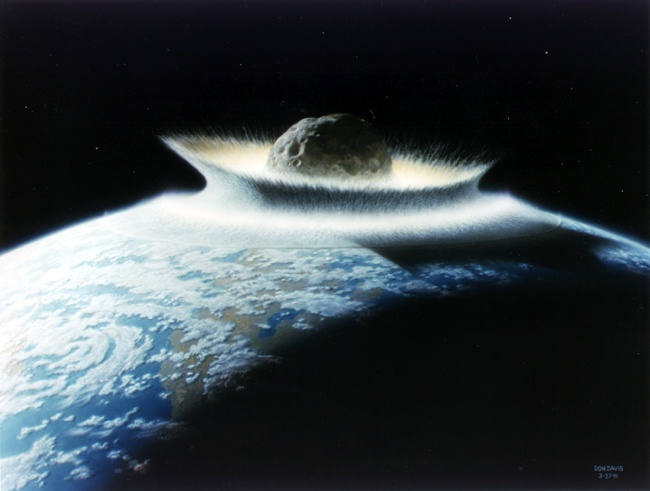
All over the Earth, there is a buried layer of sediment rich in iridium called the Cretaceous Paleogene-Boundary (K-Pg.) This sediment is the global signature of the 10-km-diameter asteroid that killed off the dinosaurs—and about 50% of all other species—66 million years ago. Now, in an effort to understand how life recovered after that event, scientists are going to drill down into the site where the asteroid struck—the Chicxulub Crater off the coast of Mexico’s Yucatan Peninsula.
The end-Cretaceous extinction was a global catastrophe, and a lot is already known about it. We’ve learned a lot about the physical effects of the strike on the impact area from oil and gas drilling in the Gulf of Mexico. According to data from that drilling, released on February 5th in the Journal of Geophysical Research: Solid Earth, the asteroid that struck Earth displaced approximately 200,000 cubic km (48,000 cubic miles) of sediment. That’s enough to fill the largest of the Great Lakes—Lake Superior—17 times.
The Chicxulub impact caused earthquakes and tsunamis that first loosened debris, then swept it from nearby areas like present-day Florida and Texas into the Gulf basin itself. This layer is hundreds of meters thick, and is hundreds of kilometers wide. It covers not only the Gulf of Mexico, but also the Caribbean and the Yucatan Peninsula.
In April, a team of scientists from the University of Texas and the National University of Mexico will spend two months drilling in the area, to gain insight into how life recovered after the impact event. Research Professor Sean Gulick of the University of Texas Institute for Geophysics told CNN in an interview that the team already has a hypothesis for what they will find. “We expect to see a period of no life initially, and then life returning and getting more diverse through time.”
Scientists have been wanting to drill in the impact region for some time, but couldn’t because of commercial drilling activity. Allowing this team to study the region directly will build on what is already known: that this enormous deposit of sediment happened over a very short period of time, possibly only a matter of days. The drilling will also help paint a picture of how life recovered by looking at the types of fossils that appear. Some scientists think that the asteroid impact would have lowered the pH of the oceans, so the fossilized remains of animals that can endure greater acidity would be of particular interest.
The Chicxulub impact was a monumental event in the history of the Earth, and it was extremely powerful. It may have been a billion times more powerful than the atomic bomb dropped on Hiroshima. Other than the layer of sediment laid down near the site of the impact itself, its global effects probably included widespread forest fires, global cooling from debris in the atmosphere, and then a period of high temperatures caused by an increase in atmospheric CO2.
We already know what will happen if an asteroid this size strikes Earth again—global devastation. But drilling in the area of the impact will tell us a lot about how geological and ecological processes respond to this type of devastation.
Asteroids: 10 Interesting Facts About These Space Rocks

At first glance, looking at a bunch of space rocks doesn’t sound that exciting. Like, aren’t they just a bunch of rubble? What use can they be in understanding the Solar System compared to looking at planets or moons?
Turns out that asteroids are key to figuring out how the Solar System came to be, and that they’re more interesting than they appear at first glance. Below, we have 10 facts about asteroids that will make you reconsider that biased first impression.
Asteroids are leftovers of the early Solar System.
The leading theory about how our neighborhood came to be is this: the Sun coalesced from a compressed grouping of gas that eventually began fusing atoms and creating a protostar. Meanwhile, the dust and debris nearby the Sun began to coalesce. Small grains became small rocks, which crashed into each other to form bigger ones. The survivors of this chaotic period are the planets and the moons that we see today … as well as a few smaller bodies. By studying asteroids, for example, we get a sense of what the Solar System used to look like billions of years ago.
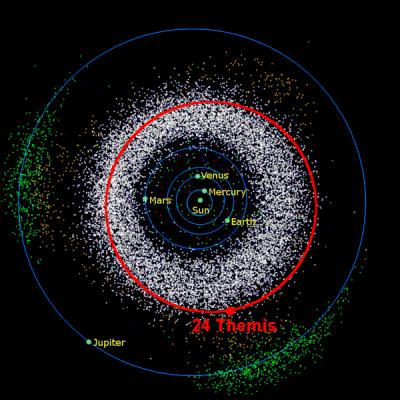
Most asteroids are in a “belt”.
While there are asteroids all over the Solar System, there’s a huge collection of them between the orbits of Mars and Jupiter. Some astronomers think that could have formed into a planet if Jupiter was not nearby. By the way, this “belt” may erroneously create the impression that it is chock full of asteroids and require some fancy Millennium Falcon-style maneuvering, but in reality there are usually hundreds or thousands of miles in between individual asteroids. This shows the Solar System is a big place.
Asteroids are made of different things.
In general, an asteroid’s composition is determined by how close it is to the Sun. Our nearby star’s pressure and heat tends to melt ice that is close by and to blow out elements that are lighter. There are many kinds of asteroids, but these are the three main types, according to NASA:
- Dark C (carbonaceous) asteroids, which make up most asteroids and are in the outer belt. They’re believed to be close to the Sun’s composition, with little hydrogen or helium or other “volatile” elements.
- Bright S (silicaceous) asteroids and are in the inner belt. They tend to be metallic iron with some silicates of iron and magnesium.
- Bright M (metallic) asteroids. They sit in the middle of the asteroid belt and are mostly made up of metallic iron.
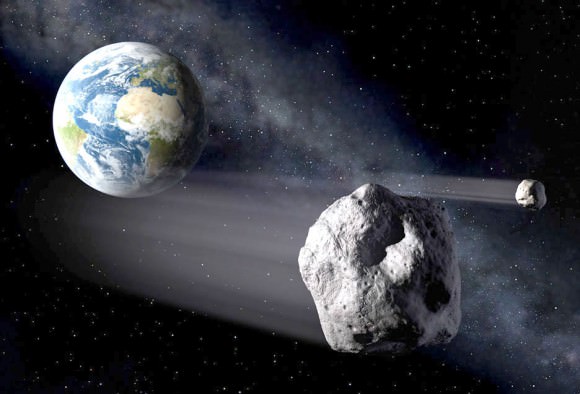
Asteroids also lurk near planets.
NASA also has classifications for this asteroid type. Trojans stay in the same orbit as a planet, but they “hover” in a special spot known as a Lagrangian point that balances the pull of the planet’s gravity and the pull of the Sun. Trojans near Mars, Jupiter and Neptune have been discovered — as well as at least one near Earth in 2011. We also have near-Earth asteroids, which cross our orbit and could (statistically speaking) one day pose a threat to our planet. That said, no one has yet identified any one asteroid that will one day collide with our planet for sure.
Asteroids have moons.
While we think of moons as something that orbits a planet, asteroids also have smaller bodies that orbit them! The first known one was Dactyl, which was discovered in 1993 to be orbiting a larger asteroid called Ida. More than 150 asteroids are known to have moons, with more being discovered periodically. A more recent example is one discovered orbiting Asteroid 2004 BL86, which passed 750,000 miles (1.2 million kilometers) from Earth in early 2015.

We have flown by, orbited and even landed on asteroids. NASA says there are more than 10 spacecraft that accomplished at least one of these, so we’ll just cover a couple of examples here. NEAR Shoemaker touched down and survived for weeks on 433 Eros in 2001 despite not being designed to do it. NASA’s Dawn spacecraft spent months orbiting Vesta — the second-largest member of the asteroid belt — in 2011 and 2012. And in 2010, Japan’s Hayabusa spacecraft made an astonishing return to Earth bearing samples of asteroid Itokawa that it nabbed in 2005.
Asteroids are too small to support life as we know it. That’s because they’re too tiny to even hold on to atmospheres. Their gravity is too weak to pull their shape into a circle, so they’re irregularly shaped. To get a sense of just how small they are in aggregate, NASA says the mass of all the asteroids in the Solar System is less than our Moon — which only has a tenuous “exosphere” itself.
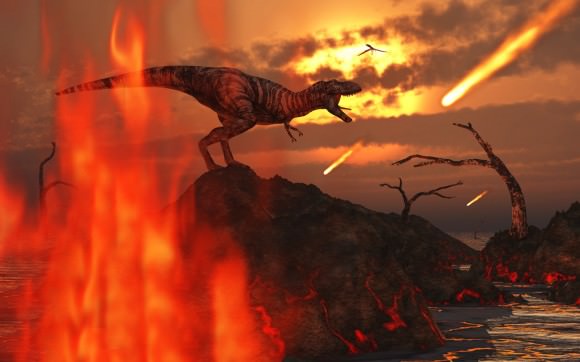
Despite their small size, water may flow on asteroid surfaces. Observations of Vesta released in 2015 show gullies that may have been carved by water. The theory is that when a smaller asteroid slams into a bigger one, the small asteroid releases a layer of ice in the bigger asteroid it hit. The force of the impact briefly turned the ice into water, which streaked across the surface. (As for how the ice got there in the first place, it’s possible that comets deposited it in some way — but that’s still being investigated as well.)
An asteroid could have killed the dinosaurs. The fossil record for dinosaurs and other creatures of their era show them rapidly disappearing around 65 million or 66 million years ago. According to National Geographic, there are two hypotheses for this event: an asteroid or comet hitting the Earth, or a huge volcano eruption. The case for an asteroid comes from a layer of iridium (a rare element on Earth, but not in meteorites) that is found all over the world, and a crater called Chicxulub in Mexico’s Yucatan Peninsula that is about 65 million years old. Iridium, however, is also found inside the Earth, which lends credence to some theories that it was volcanoes instead. In either case, the resulting debris blocked the Sun and eventually starved those survivors of the impact.
At least one asteroid has rings. Called Chariklo, scientists made the surprise discovery in 2013 when they watched it pass in front of a star. The asteroid made the background star “blink” a few times, which led to the discovery that two rings are surrounding the asteroid.



